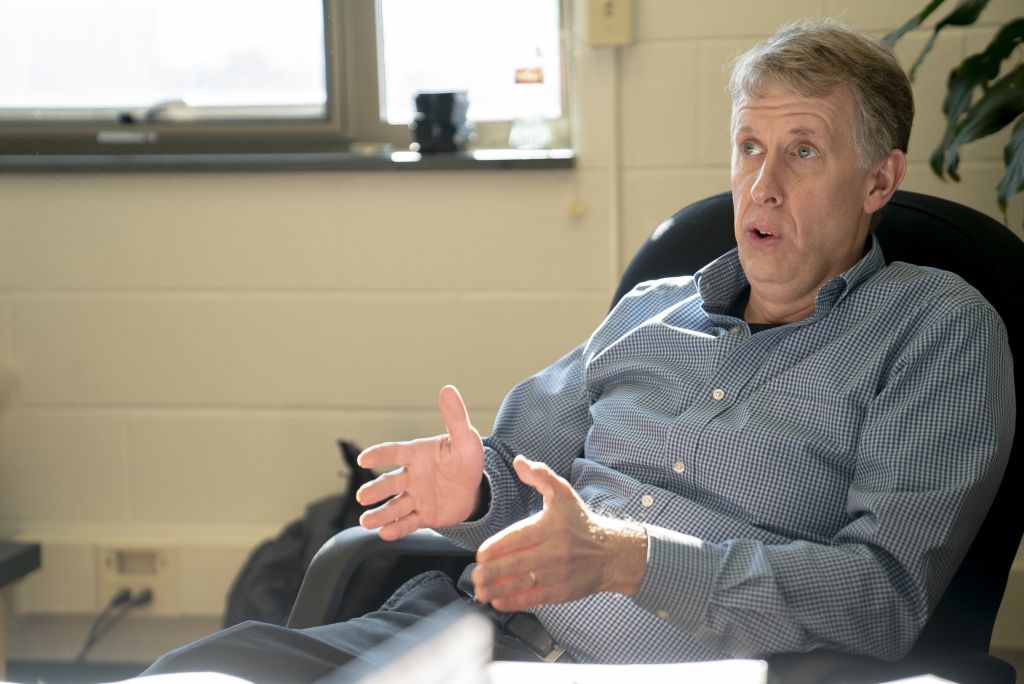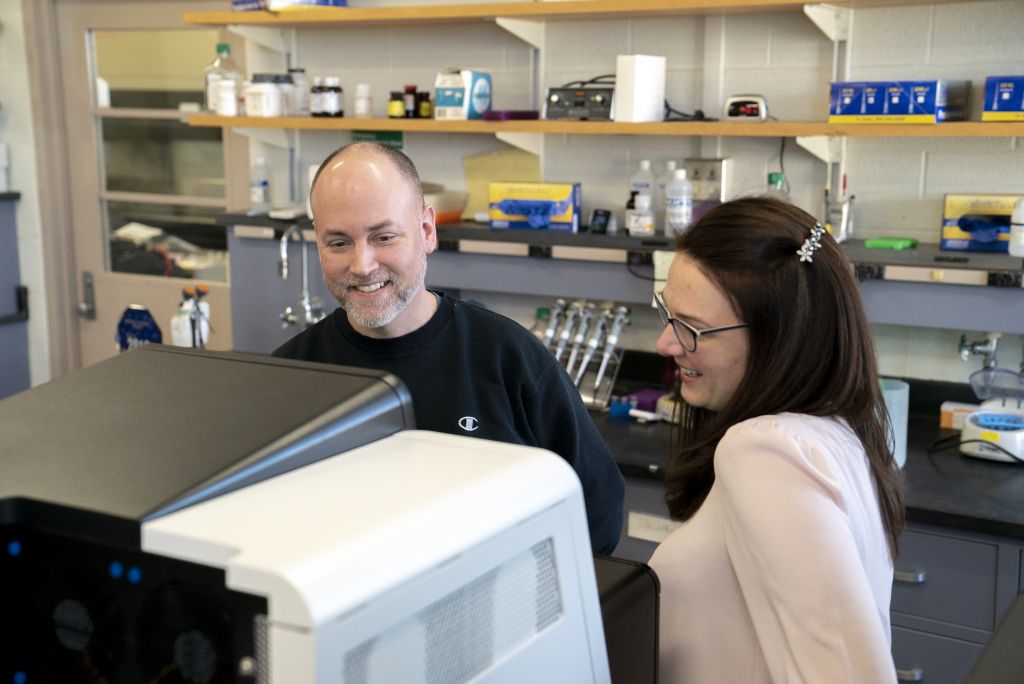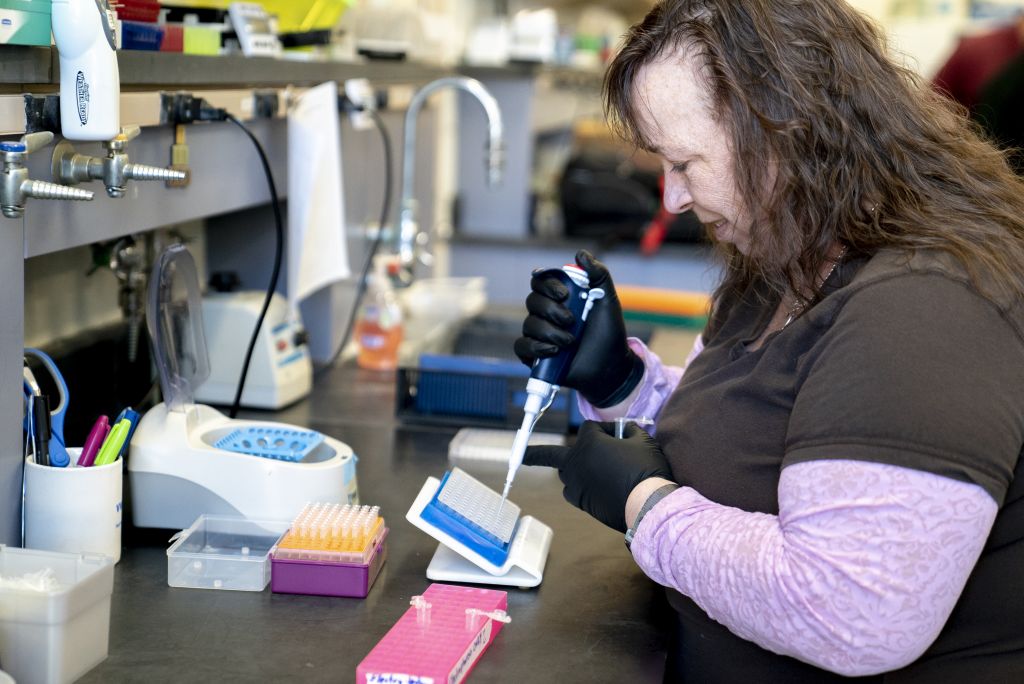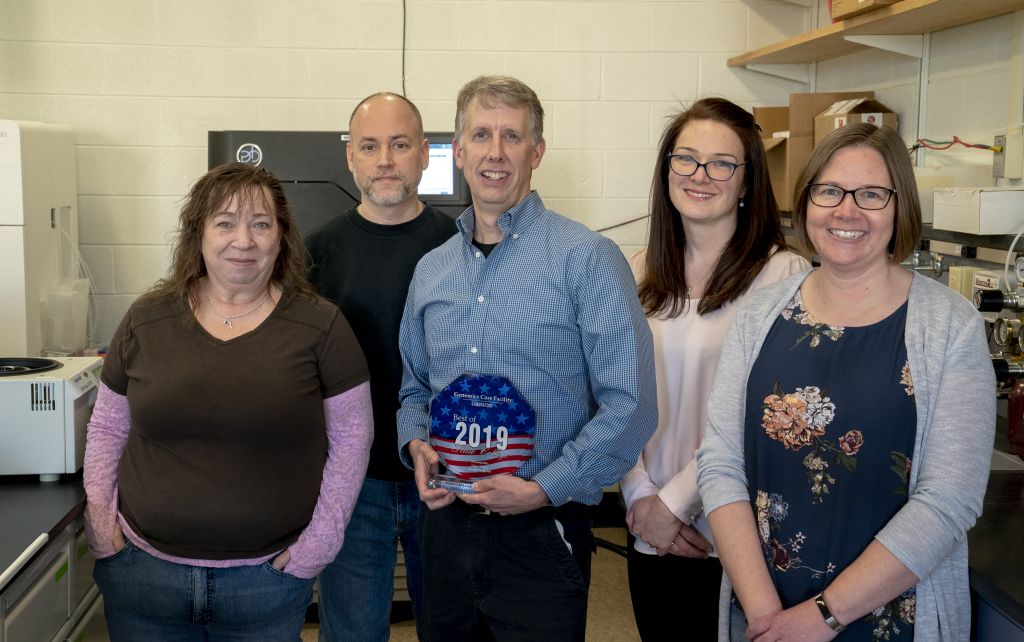Core Topics: The Evolution of Genomic Sequencing

“Sequencing the first human genome took a number of years and there are various estimates, but it cost around a billion dollars,” says Craig Praul.
“That can now be done overnight for about a thousand.”
Dr. Praul is the Director of the Huck Institutes’ Genomics Core Facility. In his office on the top floor of Chandlee Lab, he explains the differences between Sanger sequencing, which was developed in the late 1970s, and the newer “next-generation sequencing,” which his team has been doing for the last decade and a half. It’s a difficult topic to put into layman’s terms.
Wary of giving a misleading answer, Praul repeatedly falls back on comparisons of the two, sketching out the contours of their differences: Sanger sequencing is about five and a half bucks per run; next-gen runs are in the thousands to tens of thousands of dollars but are much cheaper at scale. A Sanger run might produce something like a thousand nucleotides of data; next-gen—easily a hundred billion.
“We have several different instruments that all do, on the surface, ‘DNA sequencing,’” he explains. “But next-gen sequencing is a highly parallel process. Whereas the output from the Sanger sequencing is essentially a single molecule, in next-gen sequencing we’re producing a very large number of sequencing reads per reaction.”
The major use of next-gen sequencing in the genomics core is for a task called “differential gene expression,” which makes up about 75 percent of the facility’s next-gen work.
“Almost all of the cells in your body have the same DNA content, but what makes different tissues and cell types different is the expression of those genes,” says Praul. “Some genes are turned on; some are turned off. The expression of those genes is reflected in RNA transcripts produced from the DNA. If you want to understand, for instance, what makes a particular tissue different than another tissue, you can look at gene expression.”
“If you want to understand what makes a particular disease state different from a normal state, you can look at gene expression.”

He admits next-gen is a “more glamorous” process, grabbing most of the headlines. Working with Douglas Cavener’s lab, the Genomics Core sequenced the genome of the giraffe and its closest relative, the Okapi, in a landmark 2015 collaboration that sought to better understand the unique genetics of the giraffe’s distinctive and demanding physiology.
That remains the facility’s signature project, but Sanger still has its uses, and plenty of researchers continue to employ it to break new ground. “Sometimes people are making DNA constructs, and they need to confirm that they’ve made this construct correctly, so they need to sequence the DNA that comprises the construct. That’s what you would use Sanger sequencing for; we’re interested in the sequence of what is, in effect, one molecule.”
The Genomics Core did a lot of Sanger samples last year—about 30,000, in fact. It’s a busy operation overall: in 2019, Praul and his team worked with more than 400 scientists from 165 research groups, performing a wide range of genomics services.
“The wall outside my office is covered with publications that acknowledge the sequencing done here,” states Praul. “There are a lot of different projects.”

Part of what makes those projects possible is the culture of collaboration across various fields that happens at the Huck Institutes. The Core Facilities are available to any Penn State researcher, and the Genomics team has assisted labs from an estimated 25 departments across seven University Park colleges—as well as the Penn State commonwealth campuses, the Penn State Hershey College of Medicine, and a handful of smaller Pennsylvania institutions lacking the resources of a place like UP. It’s a culture that doesn’t happen by accident.
“Huck has such a good organization, and the core facilities support the faculty researchers really well,” said Praul. “I don’t mean it in a bad way, but I don’t think the faculty can appreciate, historically, how this used to work. In terms of the facilities—if they existed, and there weren’t a lot that used to—they were a lot more siloed. There was not this interdisciplinary thing. If there was a facility in chemistry, and you were from sociology, maybe you could use that, but it wasn’t common. You kind of had to know somebody.”
“Everything here is available to everybody, which is our big strength—I’ve received feedback from faculty members who have told me that even in 2020, it doesn’t work as seamlessly in some other institutions as it does here with Penn State. In other institutions, if you’re in the chemistry department, you might not have access to what goes on in the biology department, which to me and everybody here at the Huck and Penn State, seems crazy.”
That open-door policy has enabled the Genomics Core to build a flourishing operation, which hasn’t gone unnoticed. It was recently named the “Best Lab” in State College Magazine’s Best of 2019.
“This recognition is thoroughly deserved,” said Nigel Deighton, director of research instrumentation at The Huck. “The Genomics Core Facility make a great team with excellent leadership. In an environment where most awards are made to individuals, it is especially pleasing that this one is for a team of our colleagues.”
“With over 400 users across campus, they are clearly having a great impact.”
